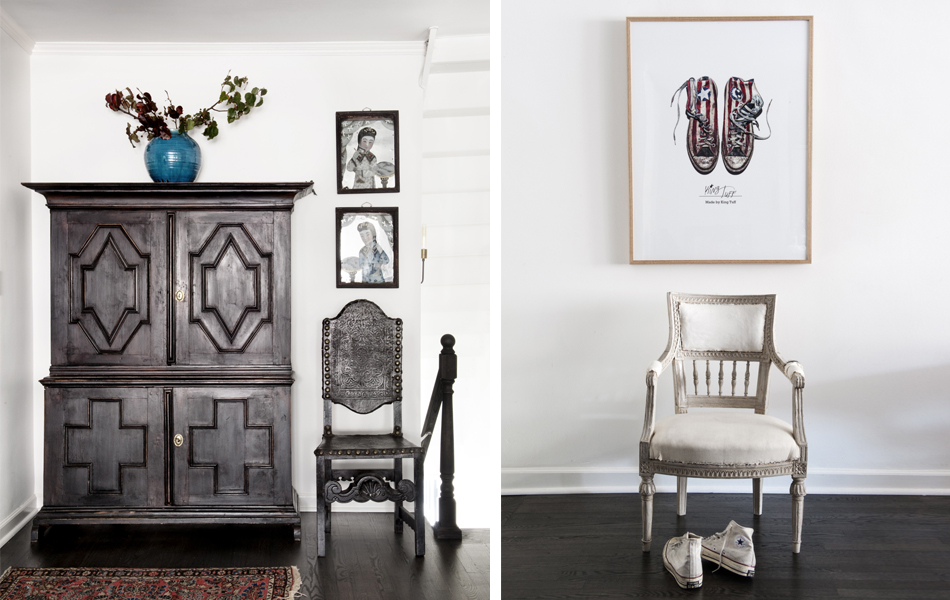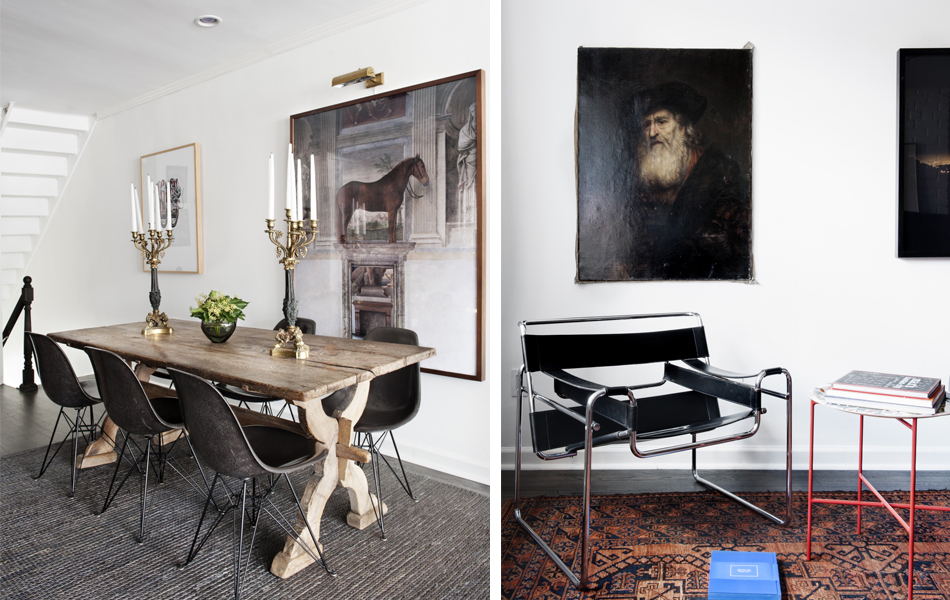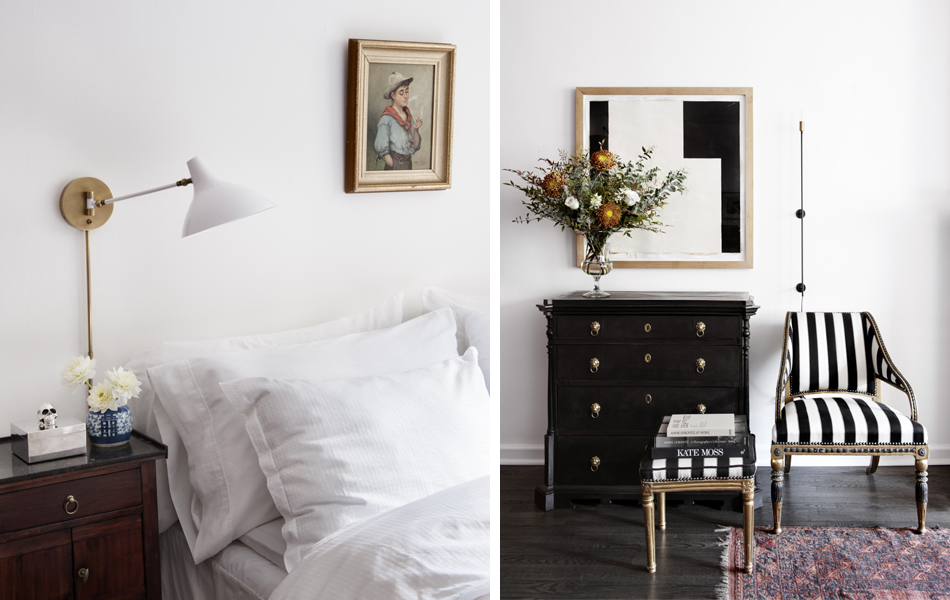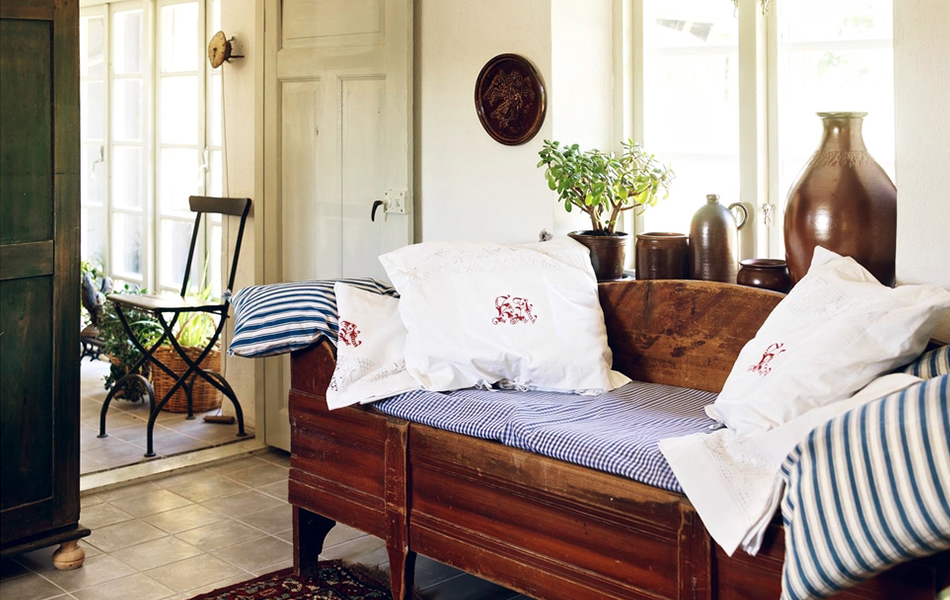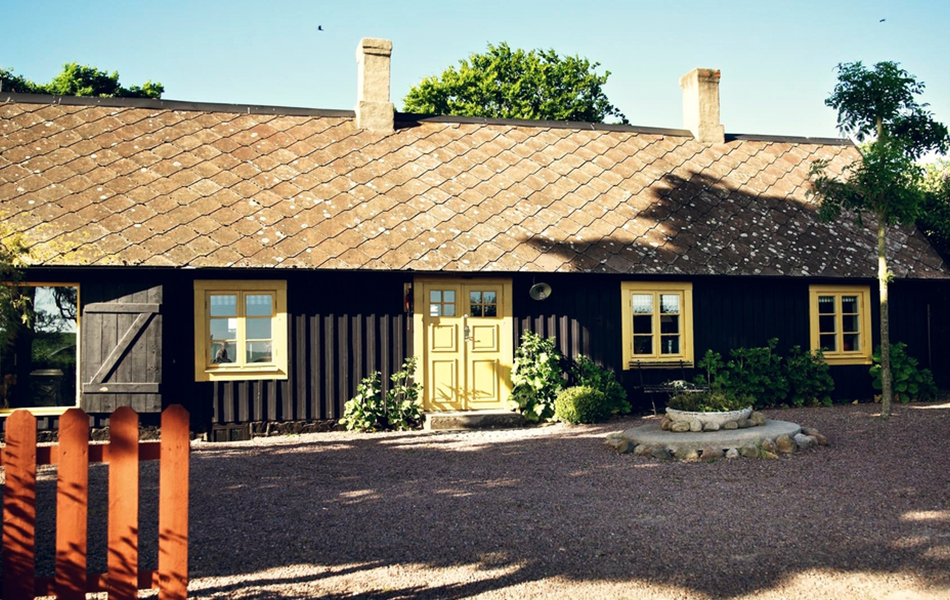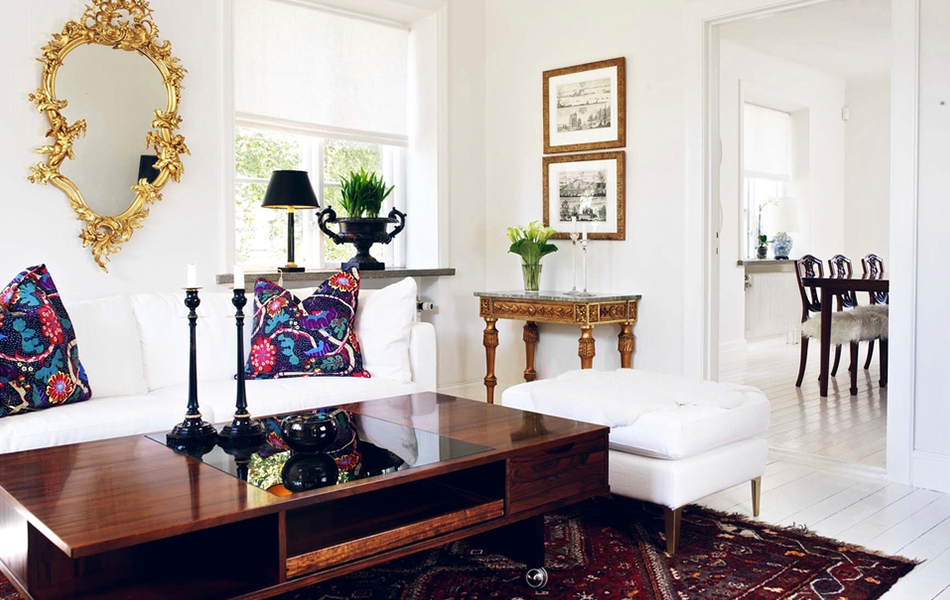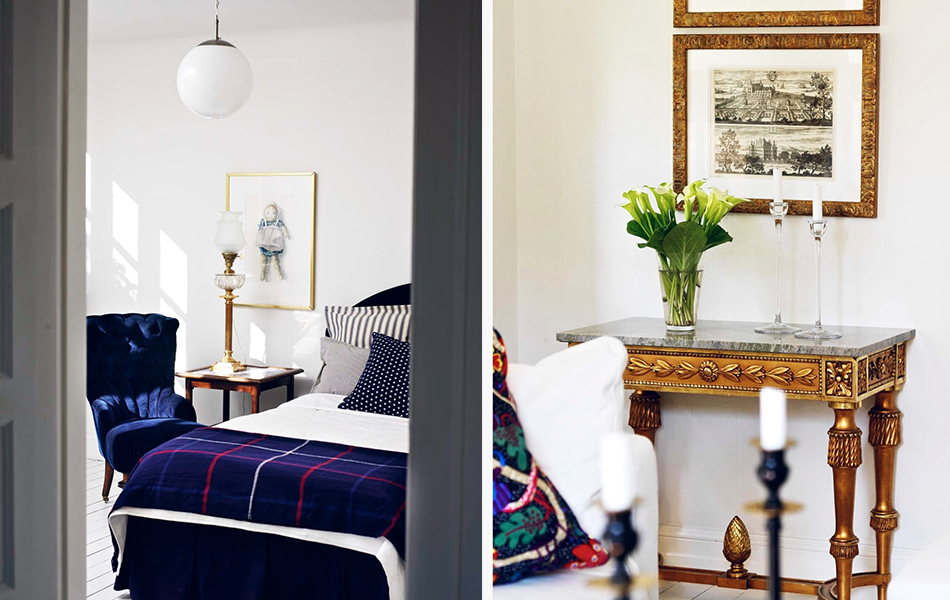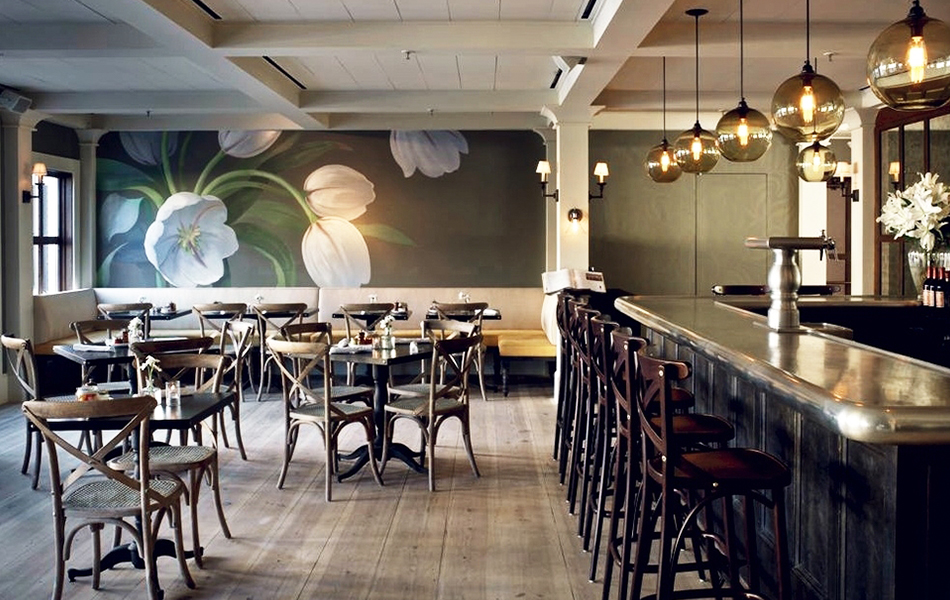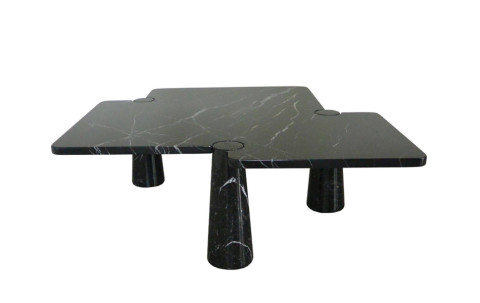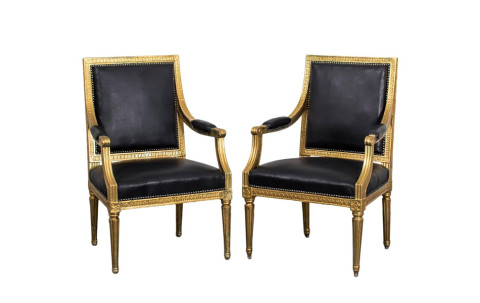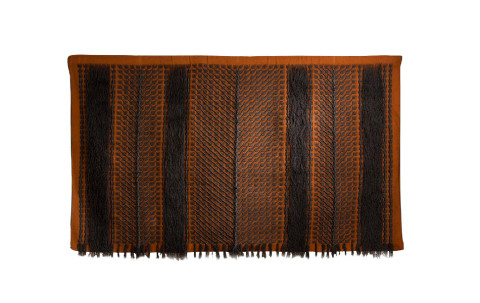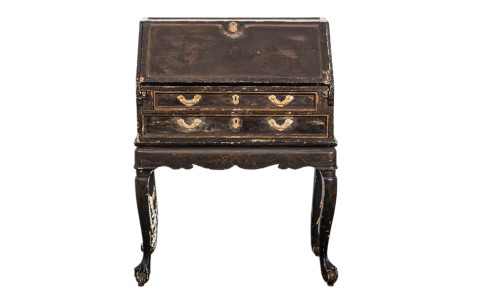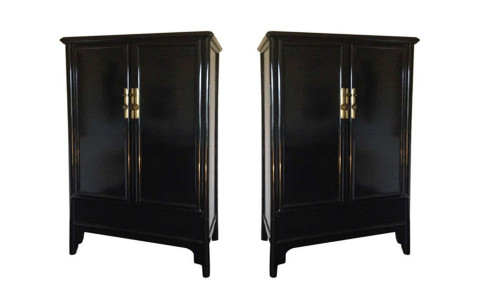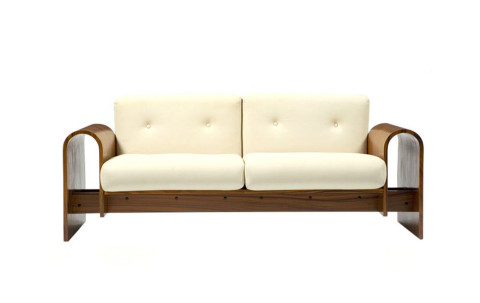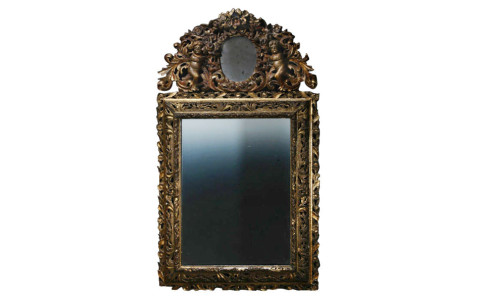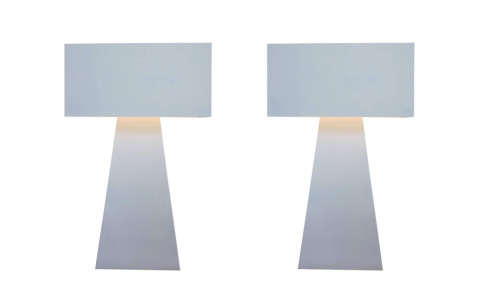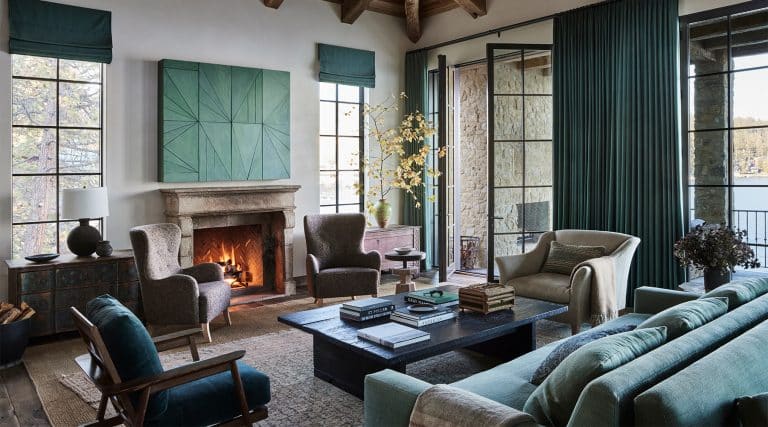
January 28, 2016Swedish furniture dealer Liza Laserow has a flair for combining antiques with modern finds in her interiors. Her youthful sensibility has won her several creative opportunities. Top: In the living room of her Chelsea, New York, apartment, a Josef Albers screen print provides a counterpoint to an Ephraim Stahl armchair.
Liza Laserow tried to carve out her own career path, but a passion for antiques derailed her plans. The daughter of Karin Laserow, one of Sweden’s leading dealers, she initially turned away from the family business to study law in college. “It sounds so superficial, but one of my mom’s lawyer friends in the 1990s was always dressed so well and looked so cool,” she remembers. “Every time she came to our house for dinner, I said, ‘I’m going to be like Elizabeth.’ ”
Turns out she was more interested in Elizabeth’s style than her profession. Laserow moved to New York in 2006 and joined a law firm only to find herself uninspired by the legal world. She soon landed a job in finance and ended up with a month off before she was due to start at the new company. “That’s what I call my lucky month,” says Laserow, who is 34. To pass the time, she began helping out in the New York office of her mother’s Laserow Antiques & Interior Design firm found the work infinitely more fulfilling.
“I realized that this is what I know best,” she recalls. “I did my first antiques show when I was two years old and restored furniture every single school break. It’s what I grew up with, being dragged around to every important museum, antique show and estate sale.” Before long, she had become a full partner in what is now a mother-and-daughter operation, running its Manhattan office while her mother remains in Vollsjö, Sweden, home to the flagship gallery. At the same time, Laserow started taking on select interior design commissions, including relaxed country houses in rural Sweden, a sophisticated Manhattan brownstone and the chic Artisan Restaurant in Southport, Connecticut.

Laserow is clearly inspired by her mother, Karin, who favors an antique but streamlined aesthetic, as seen in her dining room here. “The candelabras on the table are the most beautiful I’ve seen,” Laserow says. “They’re from the Empire period and have that perfect gilt-bronze surface with a mix of matte and shiny.” The elegant chandelier dates to the Gustavian period. Photo courtesy of Liza Laserow
Although Laserow is inspired by her mother’s sensibility, expressed in an unfussy, well-edited selection of Swedish antiques, she hasn’t hesitated to bring her own youthful eye to bear, evidenced in a more eclectic mix of periods and styles. “I think interior design is like playing golf: You’re never good enough, and there’s always something new to learn,” she says. “Creativity is endless.”
This open-minded approach is most apparent in her own home, a duplex in New York’s Chelsea neighborhood, which she renovated with her creative director husband, Fabian Berglund, last year. “I believe in mixing, and our home reflects that,” she says. “It has everything, from a seventeenth-century Baroque cabinet to finds from the 1960s,” along with several contemporary pieces.
While some young homeowners might find fine antiques intimidating or worry that items from different periods will clash, Laserow is a firm proponent of buying what you love, investing in a few special pieces. “I believe in spending money on pieces that will not go out of style,” she says, citing the Baroque-era cabinet. “You can never say that cabinet is out of style, because it was only in style several hundred years ago.”
That doesn’t mean she treats such pieces as dusty museum artifacts. “Use the antiques — that’s something I learned growing up,” she says. “Don’t keep them on a pedestal.” For instance, one of her favorite pieces is an 18th-century Swedish trestle dining table. “This poor thing has been through many, many dinner parties, because I love to cook and entertain, but all the parts are original,” she says.“The more it wears, the more beautiful it gets, and it will probably outlive us both.”

Laserow is “deeply in love” with this cowhide-covered LC chaise longue by Le Corbusier. “I love everything by him,” she says. “The French just know how to do it.”
Molded fiberglass Eames chairs set around the table are something of a surprise, especially considering that the tabletop holds two tall gilt French Empire candelabra. But the effect is invigorating rather than off-putting. “I just think they’re cool,” Laserow says of the chairs, “with a good, nice shape.” As for the candlelight, that’s an essential. “We always had lit candelabras in the house when I was a kid,” she says. “My mom and dad have a pair that are exquisite. I told them that if the house catches fire, after saving every living thing, grab those candelabras!”
The living room contains a similarly punchy mix of old and new. A blue-chip gilt armchair by Ephraim Stahl, one of the foremost furniture makers from Sweden’s Gustavian period, is flanked by two 20th-century artworks: a Josef Albers Homage to the Square screen print and a black-and-white painting by Swedish artist Peter Hahne that Laserow selected for its boldly graphic appeal.
The biggest contrast, however, is at the top of the stairs, where an antique Gustavian chair is positioned beneath a framed poster for a recent Converse ad campaign. Depicting a pair of battered high-tops belonging to the indie rocker King Tuff, it provides ample evidence that Laserow doesn’t feel the least bit restricted by her undying affection for antiques.
“I believe in putting together interior design with pieces you love. It doesn’t need to be all one period or based on a theme or color story,” she says. “I think that’s why someone like Jacques Grange is so big. There are no rules — he mixes everything. When a room is too well coordinated, it just feels plastic to me.”

